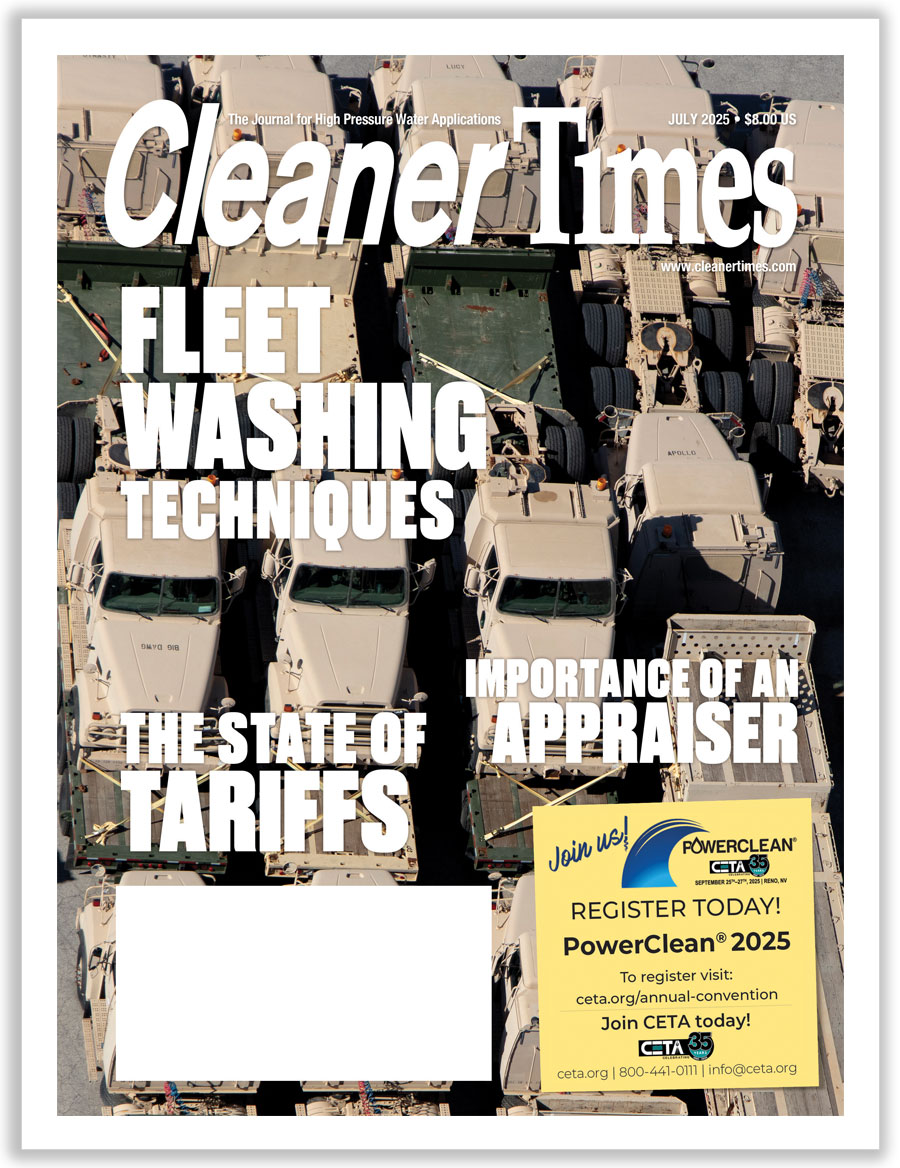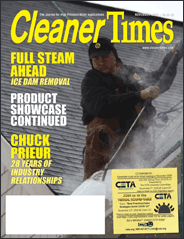
Chemical Safety
by Diane M. Calabrese | Published June 2025

The good, the bad and the ugly – a catchy phrase. More’s the pity that it does not apply to chemicals.
Or anything else.
Chemicals must be evaluated in context. Elemental sodium is incendiary. Sodium united with chlorine as salt takes on an innocuous – and endlessly useful — form.
But surely there are chemicals – everything is ultimately a chemical – in elemental or compound form that are only good. Perhaps not. If the chemical is in the wrong place at the wrong time, such as a supply of oxygen enhancing a fire. And then there’s water intoxication among those who imbibe too much.
Chemical safety begins and ends where all safe practices do: Paying attention to details while immersed in an activity.
Our industry does not use as many chemicals as many others. But transport, storage, labeling, and correct use all come into play. Safe use of chemicals, then, is about more than a dilution or a compound choice.
It is about not overlooking anything. For instance, consider disposal.
“Disposal is one of the most overlooked” dimensions to safe chemical use, says Linda Chambers, brand and sales manager at GCE/Soap Warehouse Brand in Norcross, GA. “Most chemicals should not just be tossed in the garbage or poured down a drain, even a sewer drain.”
So where do we look to find the guide for proper disposal? That’s tricky.
“Unfortunately, SDSs [safety data sheet] are not that helpful [as] most just list in Section 13, ‘Dispose in accordance with all applicable regulations. May be subject to disposal regulations: U.S. EPA 40 CFR 261. Hazardous Waste Number(s): D002,’ which is not very helpful,” explains Chambers.
But the how-to of disposal is not the only puzzle. “Another issue is cost,” says Chambers.
“To properly dispose of chemicals, companies usually have to pay a specialized service company to come and pick up for disposal, which can be expensive if only small amounts are occasionally needed and not a monthly service,” explains Chambers. That’s just one part of the cost.
“[There] are usually volume minimums that must be met to get a pickup,” says Chambers. Fully understanding the difficulties in disposal, she has ventured to help contractors.
“I have suggested and looked into having a company do a monthly pickup as a vendor at our location for our contractor customers – like battery stores or auto-supply stores do for their customers,” explains Chambers. “We have spoken to our contractor customers, but they were not interested in paying even a small fee per gallon for us to even try to service.”
Chambers laments that the strategy she suggested had no takers. “I wish I knew some way to motivate service contractors to do the right thing when disposing of expired, unwanted or contaminated chemicals when the situation arises.”
Of course, Chambers hopes – as we all do, that contractors are doing the right thing and using an appropriate disposal system. There are many training programs in the safe use of chemicals available. Thus, the guidance is there for the taking.
Which training programs would Chambers recommend? “The PWNA has online training classes at PWNA.org – Chemical Safety $49. [Our company] does a few classes during the year, the ABC’s of Chemicals and Chemical Safety and Spill Kits; these are free with $25 deposit you get back on the day of class to use to buy product in our store. The Power Wash Academy also has an online Chemical Safety Class, $49.”
We cite the prices (always subject to change) only to emphasize the modest investment needed to obtain expert assistance with the ins and outs of chemical safety. Moreover, the instructional offerings Chambers cites are just a sampling of educational choices available.
Leading the way
In one sense, our industry leads the way in chemical safety. Extracting the most cleaning work from water – pressurized, heated or steamed – reduces the need for chemicals. That means fewer chemicals with which to deal.
OSHA envisions the elimination and reduction of chemicals in the workplace – particularly outrightly hazardous chemicals, as a boon to worker wellbeing. And it offers a toolkit on the subject (see https://www.osha.gov/safer-chemicals).
The OSHA toolkit emphasizes a thoughtful approach. For example, a company should frequently review its chemical use. How can more be done with less or a switch to a less troublesome chemical be made?
There is no question that exposure to certain chemicals causes health problems, which may result in fatalities. According to OSHA, illnesses tied to exposure to chemicals on the job approach 200,000 each year. And then, there are the deaths: 50,000 annually.
While OSHA aims to partner with employers to minimize exposure to chemicals, NIOSH [National Institute for Safety and Health] aims to make it as simple as possible to understand the nature and the risks of specific chemicals. As such, it now has available (open access) one of the finest retrieval tools for information about chemicals we have ever seen. (See https://www.cdc.gov/niosh/chemicals/about/index.html to get started.)
In addition to its own NIOSH Pocket Guide to Chemical Hazards (in website, pdf, mobile formats), NIOSH links to the International Chemical Safety Card (ICSC) database.
The ICSC database can be queried by the name of a chemical, the CAS [Chemical Abstracts Service] number for a chemical, the UN number for a chemical, or the ICSC number. A query can also be entered with a text string.
(See https://chemicalsafety.ilo.org/dyn/icsc/showcard.listCards3?p_lang=en. This writer chose English among the many languages offered for ICSC database users.)
The test query we entered was ‘sodium hypochlorite’ (by name). In return, we were offered two choices of cards – one for less than a 10 percent solution of sodium hypochlorite and one for a more than 10 percent solution. Storage (separated from acids, cool and dark place, original container), safety precautions (protective eyewear, no eating or drinking when using) and first aid are among the inclusive and lucidly tabulated returns on the card.
Clarity
OSHA is not the only regulator interested in chemical safety. In addition to NIOSH at CDC, there is EPA [Environmental Protection Agency]. For all the information regulators provide, there is a great deal left to discretion of the chemical’s user – take the example again of “proper disposal”.
Where to begin? Don’t do anything stupid, such as using an unlabeled container or an unsuitable container to store a chemical. Many a chemical should only be stored in its original container. We assume that members of our industry never fall into the just-this-once trap of ignoring a protocol for storage or labeling.
Beyond meticulous attention in transport, storage (including shelving) and disposal, a business owner must ensure risks posed to employees from workplace chemicals are communicated. That is the essence of OSHA’s workplace hazard communication standard (HCS). Hazard designation is based on assessment of permissible exposure limits (PELs). Note that in California, many PELs are lower than national numbers and they supersede their federal counterparts.
In addition to PELs, there are RELs – “r” for recommended, which NIOSH develops. They are almost always lower than PELs. (In the exposure limit lexicon, there are still other entries, which take into account things such as short-term and time-weighted exposure).
Although a one-time use of a chemical may not require a respirator, the cumulative effect of many short uses may dictate the use of respirator. Chemical safety requires a realistic approach, one in which the risks are known and mitigated.
Know the chemical – shelf life, risks (in use, storage, transport and disposal), and always choose the least harsh chemical for the job. And keep up to date on options (and expectations).





